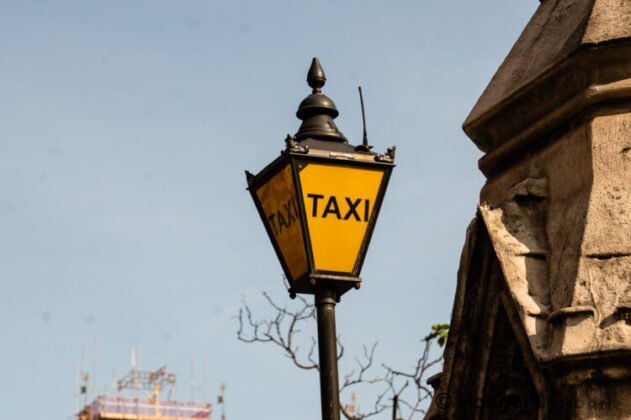Juxon Street in Lambeth, London was home to a business called the London Electric Cab Company, which operated from November 12, 1896, to August 8, 1899.
Inventor Walter Bersey. The electric taxis could go 9-12mph and appeared on the roads on this day.
They were yellow carriages and were known as “hummingbirds”, because of the sound the motors made, as well as their yellow and black color.
The Great Horseless Carriage Co built the first 24 cabs with bodies by Mulliners, and then an additional 50 were built by the Gloucester Railway Carriage and Wagon Co. The company aimed to introduce cabs (patented by the British Motor Syndicate) with the Great Horseless Carriage Co’s approval. The company’s prospectus stated that each cab would have two sets of accumulators suitable for 40 miles on one charge, and W. C. Bersey was appointed as the electrical manager.
The cabs operated under the “Red Flag Rule”, which meant a man carrying a red flag had to walk in front of any vehicle, that was not horse-drawn, to warn people it was approaching. 1896 finally saw the end of the red flag rule.
The Electric taxi went on display at the South Kensington Show of 1896. It had electric lights inside and outside. A 2.2kw Lundell motor and used batteries that had to be charged at a station in Lambeth, only taking a few minutes.
40 Cell Battery, 5o mile Range 1897
In August 1897, the London Electric Cab Co introduced their cabs, which were powered by a 40-cell battery and a 3 horsepower electric motor designed by Walter Bersey. The motor was mounted under the driver’s seat, and the accumulators were slung under the cab’s bottom. The batteries were of 40 E.P.S. traction type and had a capacity of 170 ampere-hours when discharging at the rate of 30 amperes. A special controller was fixed whereby four variations of speed were possible, the first starting the motor, the second giving it a speed of three miles an hour, the third seven miles an hour, and the fourth nine miles an hour. It was reported that this was sufficient for running 50 miles, about a day’s work, although not continuously at the highest speed.
It weighed around 2 Tonnes, which was its demise, the small tyres couldn’t handle the weight, and the cost of replacement was too high.
Scotland Yard licensed cabs under 4 conditions, being able to drive up a steep hill,” Savoy Hill”, and being able to turn in a small space, the driver had to be on board and it could stop when requested.
Tragedy in an Electric Cab, 1897
The London Electric Cab Co began their regular service and was deemed a success, with a report in September 1897 stating so. However, the company faced a tragedy when schoolboy Stephen Kempton, age 9, died in Stockmar Road, Hackney, in September 1897, after being caught in the cog wheels of the motor. Walter C. Bersey was the general manager during the time of the company’s operation.
In January 1898, the company issued another prospectus, stating that they had a sole licence for the Johnson and Lundell Motors with Series Parallel Controller Patents. The company had 71 cabs in operation by the end of December 1898, with a report of the meeting by William M. Hodges, who was the secretary. Shareholders such as Walter Dangerfield, D. G. West, and F. St. John Thompson were mentioned in the meeting report. A letter from Walter C. Bersey in February 1899 stated that since August 1897 (five months), the cabs had covered over 500,000 miles. The cabs weighed 32cwt and could cover 40 miles on one charge at a speed of 9mph.
Decline of the London’s 1st Electric Cab
Despite the success, the London Electric Cab Co faced financial trouble, and in July 1900, a petition was filed to wind up the company, with a long list of creditors. In their short time of operation, the London Electric Cab Co introduced a unique and innovative transportation option to the streets of London, and the Hummingbirds’ black and yellow color scheme became a memorable sight.




